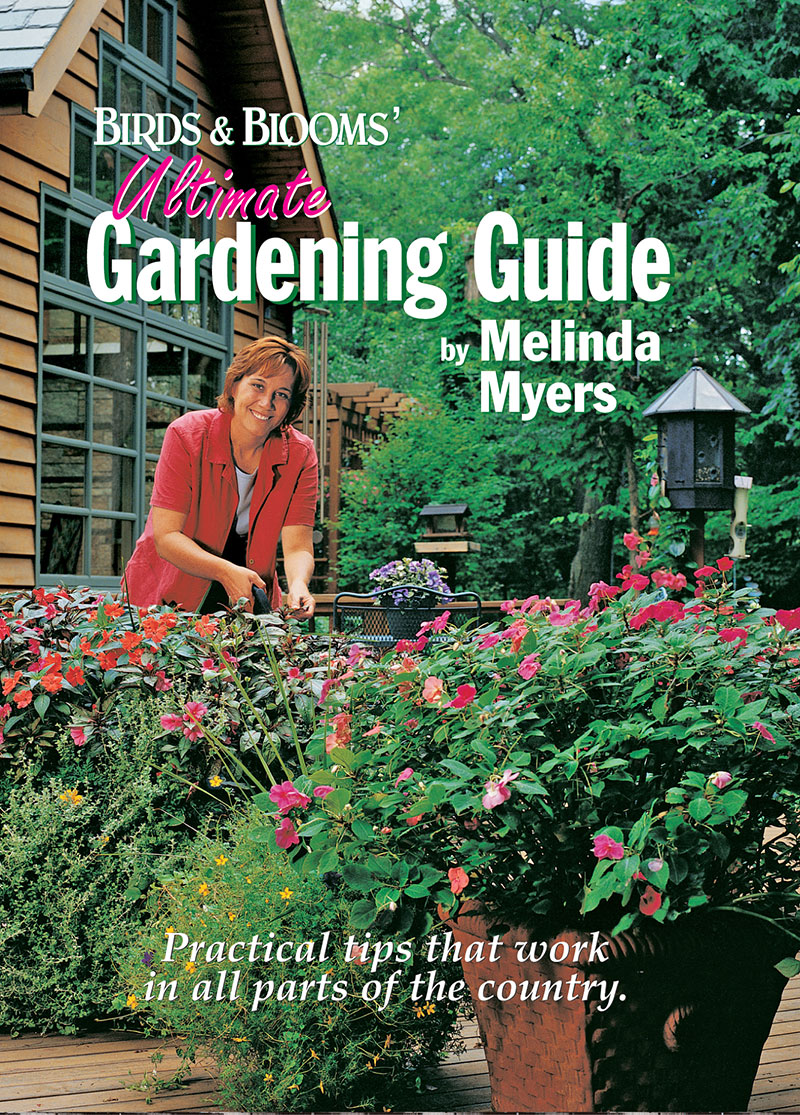
December
Flowers & Ornamental Grasses
Flowers & Ornamental Grasses
- Make a wish list of materials needed for starting seeds indoors. Consider giving the same type of gift or a gardening gift certificate to gardeners on your list.
- Give a gift from your garden. Include a picture, small packet of seeds or pressed flowers in your greeting card.
- Check container plants stored in an unheated garage for winter. Water thoroughly whenever the soil is thawed and dry.
- Shred fall leaves with your mower and mulch the soil. The leaves will help protect the soil from erosion, suppress weeds and improve the soil as they break down.
- Plant spring flowering bulbs suited to your region when the night temperatures are consistently between 40 and 50 degrees and until the ground freezes. Those in the far south need to select bulbs that require minimal chilling or purchase precooled bulbs.
- Plant freesias outdoors if gardening in zones 9 and 10.
- Those gardening in areas with mild winters can plant pansies, pinks, snapdragons and sweet Williams for winter color. Water thoroughly as needed.
- Continue to water new plantings as needed. Those in colder climates can stop once the ground freezes, then drain and store their garden hoses for winter.
- Leave healthy disease- and insect-free perennials stand for winter to increase their hardiness and vigor and provide food for birds and winter homes for beneficial insects.
- Leave the stems intact, plant bulbs near or place markers by butterfly weed, balloon flower and other late emerging perennials to prevent accidental damage in the spring.
- Continue fall clean up. Ridding the landscape of diseased leaves, fruit and annual plants is the first step in pest control.
- Mulch late planted and borderline hardy perennials and bulbs after the ground freezes with evergreen boughs or straw for added insulation.
- Gather and save leftover seeds for next year’s garden. Leave them in their original packets, place in an airtight container and store in a consistently cool place like the refrigerator.
- Those in cold climates need to empty and store annual, glazed and terra cotta containers for winter. Clean pots now and you’ll save time during the busy planting season next spring.
- Monitor and secure fencing and animal barriers or reapply repellents as needed throughout the winter.
- Reduce deicing salt damage by shoveling before applying plant friendly deicing material. You’ll use less product and eliminate salt-laden snow from ending up on your garden beds.
- Collect, store, and clean garden tools. Organize now for a seamless start to next season.
- Gather, inventory, and store fertilizers and pesticides in a secure location away from pets and children. Keep liquids out of direct sun and in a frost-free location. Move granules to a secure, dry space for storage.
Fruits, Vegetables & Herbs
Fruits, Vegetables & Herbs
- Inventory and create a list of materials needed for starting seeds indoors. These items make great gifts for you or the gardeners on your gift list.
- Those in milder climates can plant winter crops of lettuce, spinach and other greens in the garden. Use a cold frame or row covers to protect them from cold winter temperatures if needed.
- Mulch carrots, parsnips and turnips as temperatures drop. Then harvest in winter for a tasty treat.
- Continue fall clean up. Removing and disposing of diseased leaves, fruit and annual plants is the first step in next season’s pest control.
- Cut fall bearing raspberries to the ground. This eliminates the summer crop but encourages a larger and earlier fall harvest next year.
- Gather and save leftover seeds for next year’s garden. Place in an airtight container and store in a consistently cool place like the refrigerator.
- Take a soil test if the ground is not frozen and has not been recently fertilized. You will have some necessary and valuable information for next year’s gardening season.
- Gather, inventory and store fertilizer and pesticides in a secure location away from pets and children. Keep liquids out of direct sun and in a frost-free location. Move granules to a secure, dry space for storage.
Groundcovers & Vines
Groundcovers & Vines
- Continue removing and recycling fall leaves from groundcover beds.
- Make cleanup easier. Cover groundcover plantings with netting to capture and remove fall leaves to the compost pile.
- Save money and reduce deicing salt damage by shoveling first and using plant-friendly deicing compounds.
- Trim or remove vines that are climbing and encircling trunks of trees or damaging walls and siding.
Indoor & Holiday Plants
Indoor & Holiday Plants
- Extend the edible garden season by growing an indoor herb or vegetable garden of leafy greens and root crops like radishes.
- Save a few or purchase some spring flowering bulbs for forcing this winter. Plant the bulbs and store in a cool 35- to 45-degree location for 15 weeks to initiate flowering.
- Purchase lily-of-the-valley pips (underground shoots) from garden centers, catalogues or online sources to plant and force indoors for fragrant blooms.
- Force fragrant freesia bulbs into bloom. Plant several bulbs in a 6” pot and place in a cool, 55-degree location, for 45 days.
- Spruce up your houseplants for the holidays. Add colorful ribbons, ornaments, berry-laden branches or sink cut flowers stuck in a florist’s water tube into the soil.
- Move indoor plants to sunnier locations as the days shorten and sunlight decreases.
- Adjust watering schedules for your indoor plants to match any changes in the indoor growing conditions. This includes tropical and annual plants moved indoors for winter.
- Wrap holiday plants in paper or plastic sleeves to protect them from cold temperatures when transporting them from the garden center or florist to their final destination.
- Grow or give a Christmas rose (Helleborus niger) to be enjoyed indoors during the holidays, then outdoors in the garden, once the growing season begins.
- Extend the beauty of poinsettias, cyclamen, kalanchoes and other holiday plants with proper care.
- Purchase and plant amaryllis, paperwhites, and pre-cooled hyacinths for holiday gifts and decorations.
- Monitor and manage whiteflies, aphids, mites and any other insects that may have moved indoors on your plants.
- Fungus gnats, small fruit fly-like insects, are annoying but seldom harm our plants. Use an organic product like Mosquito Bits® with Bacillus thuringiensis israelensis if control is desired.
- Check houseplants for salt buildup. Scrape off the crusty salt buildup on the soil then leach the soil by watering thoroughly several times at 20-minute intervals.
- Check for freshness when purchasing a holiday tree. Run your hand along the stem. The needles should be pliable yet firmly attached to the branch.
- Extend the life of your fresh Christmas tree and maximize your enjoyment with proper care.
- Considering a living Christmas tree this holiday? Plan ahead to ensure a successful transition into your landscape.
Lawns
Lawns
- Continue cutting the grass high as long as it grows. Leave the short clippings on the lawn, adding moisture, nutrients and organic matter to the soil.
- Southern gardeners should continue pulling weeds as they appear in their warm season lawns.
- Shred leaves as you mow and leave them on the lawn. These also add nutrients and organic matter to the soil. As long as you can see the grass blades through the leaf pieces, the lawn will be fine.
- Once the mowing season is over, clean, sharpen blades and properly prepare your mower for storage.
- Shovel the snow first before applying a plant-friendly deicing salt. You’ll reduce the amount of salt needed and minimize the damage to your lawn.
Trees, Shrubs & Roses
Trees, Shrubs & Roses
- Check on container plants stored in an unheated garage for winter. Water thoroughly whenever the soil is thawed and dry.
- Continue transplanting dormant and container grown trees and shrubs if weather is mild and the soil is not frozen.
- Thoroughly water new plantings and evergreens as needed until the ground freezes. Then drain and store your garden hoses for winter.
- Rake and destroy diseased leaves to reduce the source of disease in next year’s garden.
- Wait for at least a week of freezing temperatures to protect non-hardy roses and other shrubs for winter.
- Install, monitor and secure fencing and animal barriers or regularly apply repellents to protect new plantings, fruit trees and other plants favored by deer, rabbits and voles.
- Create wind, sun and deicing salt screens to protect new plantings and sensitive plants from damage.
- Shovel the snow first before applying plant-friendly deicing salt. You’ll reduce the amount of salt needed and the damage to your garden plants.
- Prevent snow load damage to upright arborvitae and junipers. Wrap the plants with bird netting or loosely tie the branches together with strips of cotton cloth.
- Burn off some of those holiday calories with a walk around the neighborhood. Make a list of trees and shrubs that provide winter interest that you want to add to your landscape.
- Consider a living Christmas tree this holiday. Plan ahead to ensure a successful transition into your landscape.
- Drape, don’t wrap, holiday lights over tree and shrub branches. Loosely secure the lights to the stems or use lighted netting. Remove lights in spring to avoid damaging fast growing trees and shrubs.
- Collect, store, and clean your garden tools. Organize them now for a seamless start to next year’s growing season.
Categories
Upcoming Live Events
& Webinars
April 27, 2024
Ridges & Rivers Book Festival
Viroqua, WI
Register now
April 28, 2024
Flowering Trees and Shrubs
Ebert's Greenhouse Village, Ixonia, WI
May 1, 2024
FREE WEBINAR
Ornamental Fruits and Vegetables
Register now
May 4, 2024
Garden U 2024
New Richmond, WI
Register now
May 9, 2024
FREE WEBINAR
How to Plant Your Rain Garden
Register now
May 11, 2024
Ask The Plant Doctor Q & A
Ebert's Greenhouse Village, Ixonia, WI
May 12, 2024
Ask The Plant Doctor Q & A
Ebert's Greenhouse Village, Ixonia, WI
May 18, 2024
Ask The Plant Doctor Q & A
Ebert's Greenhouse Village, Ixonia, WI
June 1, 2024
Selecting, Planting, Pruning and Caring for Hydrangeas
Ebert's Greenhouse Village, Ixonia, WI
June 5, 2024
FREE WEBINAR
Under-Appreciated Pollinators
Register now
WATCH ON-DEMAND WEBINARS
Learn More










